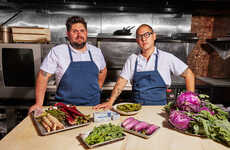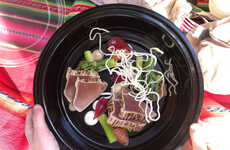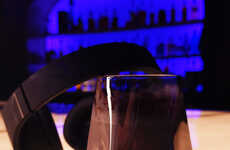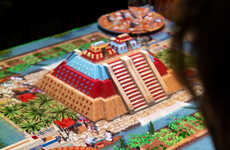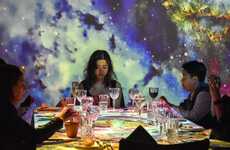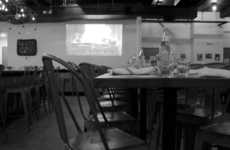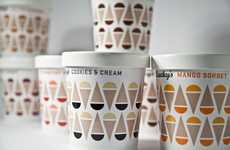
At Cafe ArtScience, Patrons Ingest Their Meals Through Inhalation
Alyson Wyers — November 7, 2014 — Tech
References: cafeartscience & psfk
At the Cambridge, Massachusetts-located Cafe ArtScience customers can inhale their meals, rather than doing it the old fashioned way. Conceived by biochemical engineer David Edwards, the inventive restaurant has a flexible menu featuring items like coffee you sniff through an oPhone, clouds you 'eat' through a Le Whaf or a mint you inhale through an AeroPod. The cafe also has traditional items ingested the regular way for the less adventurous.
Mathieu Lehanneur designed the science lab-esque interior of Cafe ArtScience. The decor ceiling-hung art pieces, hexagonal detailing and sophisticated white furnishings. Some of Edwards's other inventions are on display in addition to those of his colleagues.
In the future, Edwards hopes to continue integrating science into esthetic experiences.
Mathieu Lehanneur designed the science lab-esque interior of Cafe ArtScience. The decor ceiling-hung art pieces, hexagonal detailing and sophisticated white furnishings. Some of Edwards's other inventions are on display in addition to those of his colleagues.
In the future, Edwards hopes to continue integrating science into esthetic experiences.
Trend Themes
1. Inhalation Dining - As Cafe ArtScience demonstrates, there is a trend towards creating a unique dining experience through inhalation technology.
2. Sensory Edible Technology - The use of inhalation technology for food consumption represents a disruptive innovation opportunity in creating edible products that stimulate our senses in unique ways.
3. Interactive Molecular Gastronomy - Innovative dining experiences like Cafe ArtScience's inhalation menu demonstrate how science can be used to create new food interactions and sensory experiences for consumers, leading to an opportunity for molecular gastronomy to be more interactive.
Industry Implications
1. Hospitality - The hospitality industry can adopt inhalation dining as a way to differentiate their services and offer a novel dining experience.
2. Food and Beverage - The food and beverage industry can explore the use of inhalation technology to create new edible and sensory products and appeal to consumers looking for unique food experiences.
3. Scientific Research - Creating interactive molecular gastronomy offers an opportunity for scientific research to further explore and develop new sensory applications and technologies that can be applied in a variety of fields beyond just food and drinks.
4.4
Score
Popularity
Activity
Freshness

